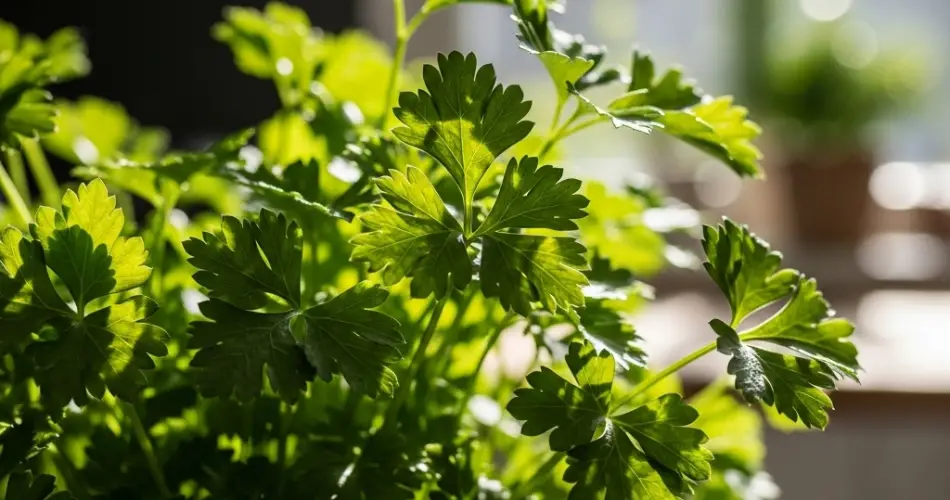Parsley is a versatile herb that’s easy to grow and adds fresh flavor to a variety of dishes. Whether you’re new to gardening or looking to expand your herb collection, parsley is a great choice for both indoor and outdoor cultivation. This guide covers everything beginners need to know about growing healthy parsley plants from seed to harvest.
Choosing the Right Type of Parsley
There are two main types of parsley: curly leaf and flat leaf (Italian). Curly leaf parsley has decorative, ruffled leaves and is often used as a garnish. Flat leaf parsley, on the other hand, has a stronger flavor and is preferred in cooking. Both types grow similarly, so choose the one that suits your culinary needs.
Starting from Seeds
Parsley is usually grown from seed, although you can also buy young transplants from garden centers. If starting from seed:
-
Soak the seeds overnight in warm water before planting. This helps soften the seed coat and speeds up germination.
-
Plant the seeds in small pots or seed trays filled with well-draining potting mix. Sow them about 1/4 inch deep and lightly cover with soil.
-
Keep the soil moist but not soggy. Germination can take 2 to 4 weeks, so be patient.
-
Place the trays in a warm location with indirect sunlight during germination.
Once the seedlings have two or three sets of true leaves, they can be transplanted into larger containers or into the garden.
Choosing the Right Location
Parsley grows best in a sunny spot with at least 4 to 6 hours of direct sunlight daily. In hotter climates, a location with morning sun and afternoon shade is ideal. For indoor growing, place your parsley near a bright window or under a grow light.
Soil and Pot Requirements
Parsley prefers moist, fertile, well-draining soil with a slightly acidic to neutral pH (around 6.0 to 7.0). If you’re growing in containers, choose pots that are at least 6 to 8 inches deep to accommodate the plant’s taproot. Use a quality potting mix enriched with compost or organic matter.
For outdoor beds, amend the soil with aged compost before planting. Good drainage is essential, as parsley roots can rot in soggy soil.
Watering and Feeding
Parsley needs consistent moisture to thrive. Water the plants when the top inch of soil feels dry. Avoid overwatering, which can lead to root rot and fungal problems.
Feed parsley with a balanced liquid fertilizer every few weeks during the growing season. If you’re using compost-rich soil, additional feeding may not be necessary.
Thinning and Pruning
If you’ve sown seeds densely, thin the seedlings so they’re spaced about 6 to 8 inches apart. This allows each plant to grow fully and prevents overcrowding.
Once your plants are established, start harvesting the outer leaves regularly to encourage bushy growth. Use clean scissors or pinch the stems close to the base. Avoid cutting the central growing point if you want continuous production.
Dealing with Pests and Problems
Parsley is relatively pest-resistant, but watch out for common issues like:
-
Aphids – Small green or black insects that suck sap from leaves. Rinse them off with water or spray with a mild soap solution.
-
Leaf miners – These insects tunnel inside leaves, leaving visible trails. Remove and discard affected leaves to prevent spread.
-
Fungal diseases – Caused by excess moisture or poor airflow. Water at the base and space plants to improve air circulation.
Growing parsley in containers can help limit pest exposure, especially if you’re cultivating it indoors.
Harvesting Parsley
Parsley can be harvested as soon as the plant has several sets of healthy leaves. Regular harvesting encourages new growth and keeps the plant from becoming too woody or tall.
For best flavor, harvest parsley in the morning when essential oils are most concentrated. Use fresh leaves immediately or store them in a damp paper towel inside a plastic bag in the refrigerator for a few days.
You can also dry or freeze parsley for longer storage. To dry, hang bunches upside down in a warm, well-ventilated area. For freezing, chop the leaves and store them in an airtight container or freeze in ice cube trays with a little water.
Final Tips for Success
-
Rotate your parsley crop each year to avoid soil-borne diseases.
-
If you allow some plants to flower, they’ll attract beneficial insects and may self-seed for the following season.
-
For continuous harvest, succession sow seeds every few weeks in spring and early summer.
Parsley is a rewarding herb for gardeners of all skill levels. With the right care and conditions, it will provide months of fresh, flavorful leaves for your kitchen.



